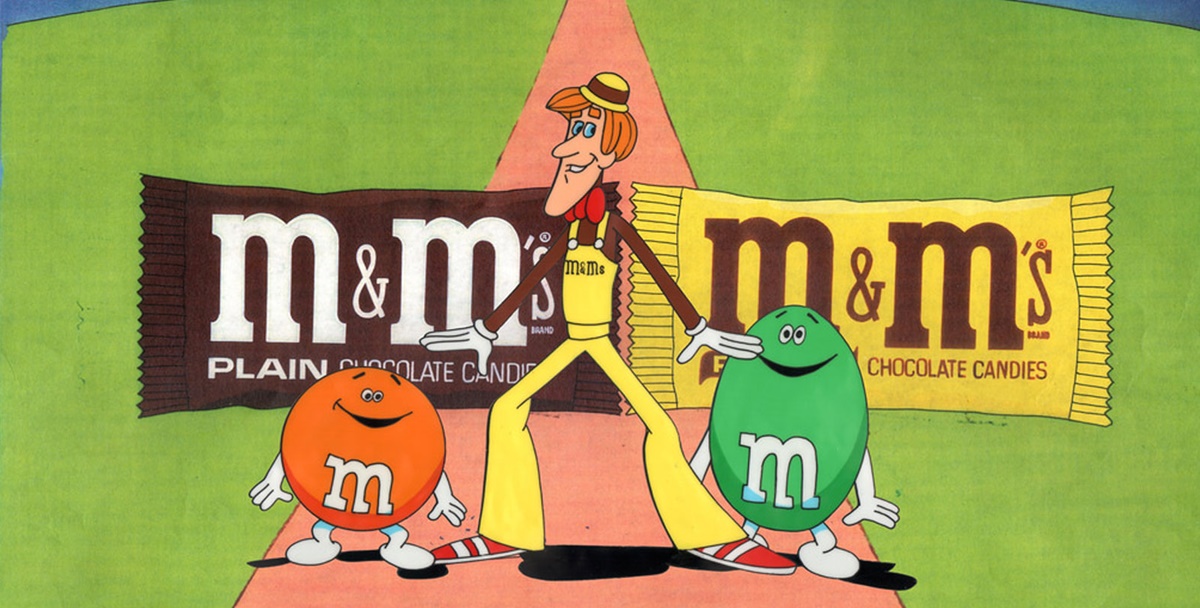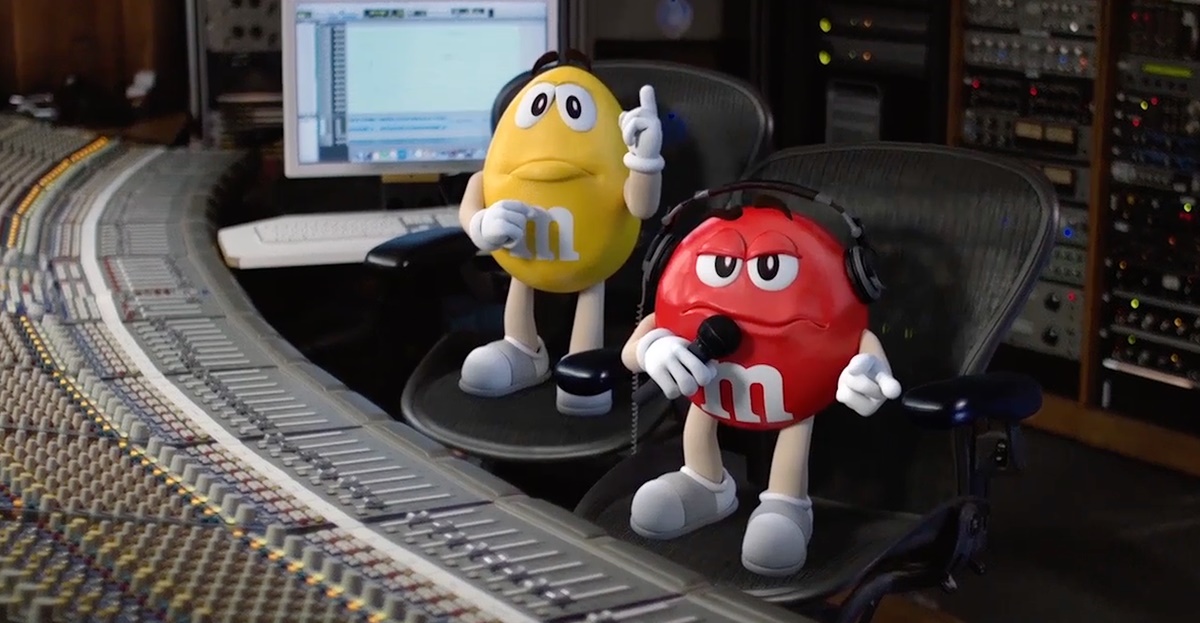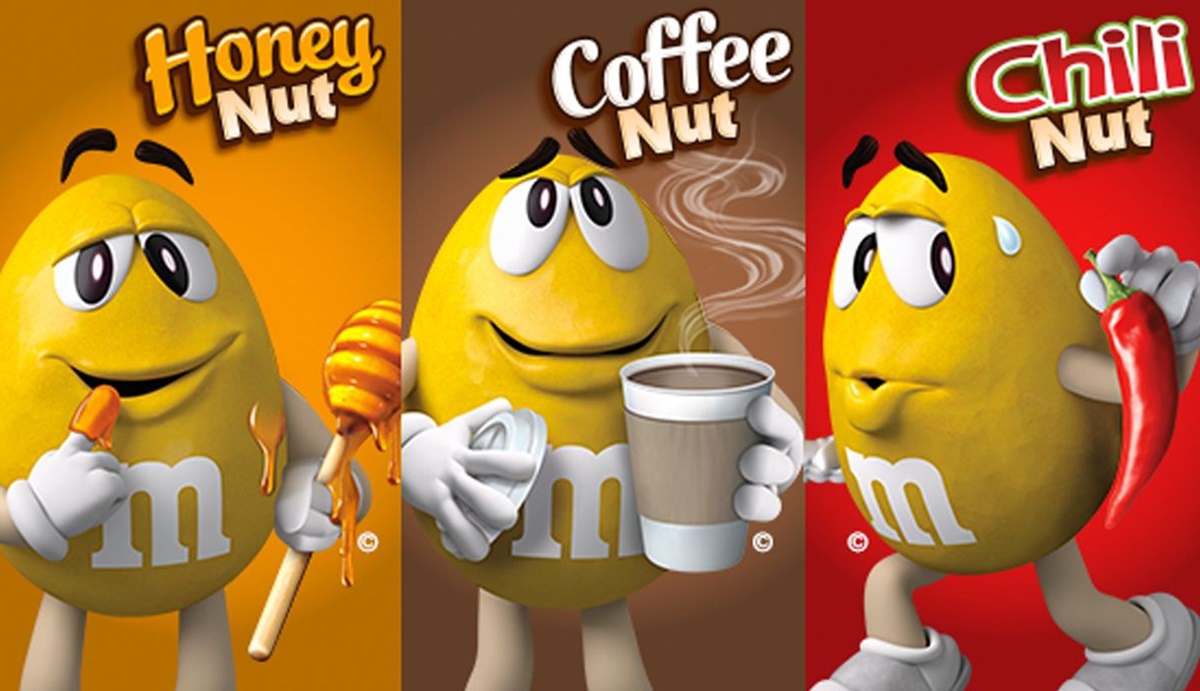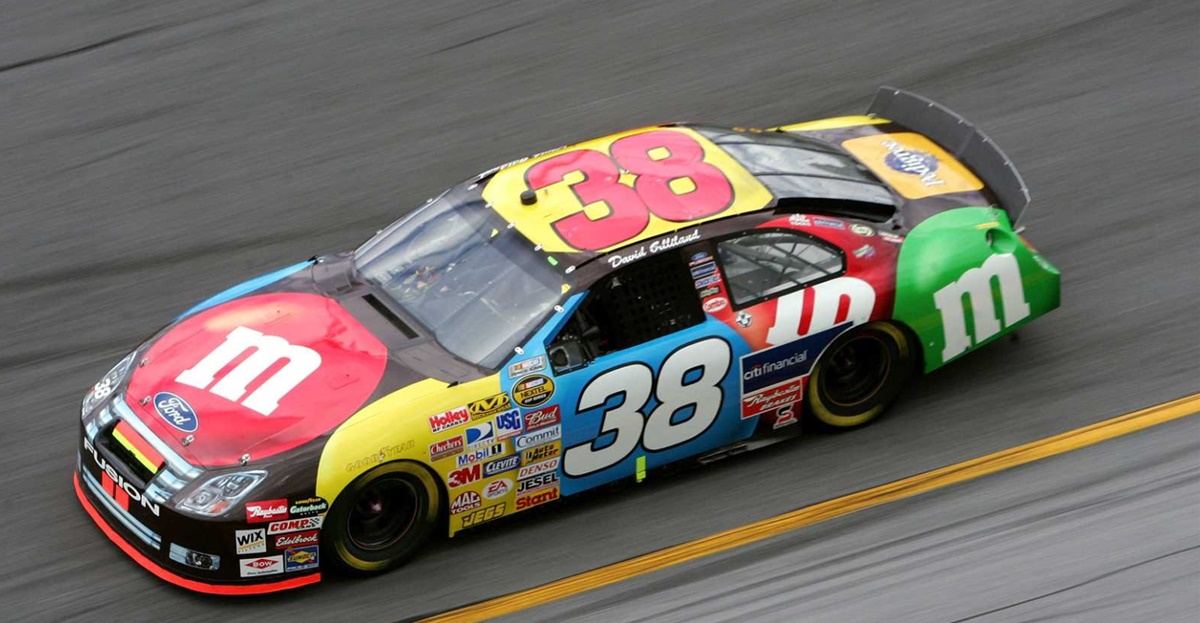M&Ms Advertising Strategy: How To Keep People Craving
Ever since the 40s, M&Ms has been popular as a bag of tasty candies that no one can resist. The world has changed a lot, but the colorful treats still manage to be on every shelf all over the world. The brand has seen plenty of changes too, but it somehow still remains relevant and ever-present.
That is actually a pretty hard task to achieve, considering how M&Ms customers have grown through the years. New technology, new products, and new brands are threats that have broken many old-timers. One thing that sets M&M apart from other brands is how it continues to stay ‘cool’ with the audience. It doesn’t run out of style, and it makes people keep talking about every campaign it creates.
How does M&Ms do such a thing, and what advertising strategy does the company use? That is what we are going to find out in this article. We will open the delicious pack of colorful M&Ms candies to unveil all of its secrets in advertising. Get ready to feast on!
Related Posts
Introduction

In 1941, M&Ms was first introduced commercially by Forrest Mars, who got the idea for the candy after observing soldiers eating chocolate pellets with hard shells during the war. The candy had a hard shell so soldiers could carry chocolate around during warm weather without melting. M&M was quickly adopted by the U.S Army during World War II. The candies were designed for easy transport and consumption on the go, which was a part of its popularity.
After the war, M&Ms quickly gained customer attention, especially with the tagline “Melt in your mouth, not in your hand” in 1949. This targeted parents who didn’t like their children making a mess eating normal chocolates without shells. The original candies had sweet chocolate filling from Hersheys with button shapes and a white letter ‘m’ printed in lowercase on one side. Through time, M&Ms continued to introduce new flavors and colors, which often accompanied with funny and lovable characters.
M&Ms is a flagship product of Mars, Incorporated - a privately held company in manufacturing food and animal products which is worth $35 billion in 2017. M&M candies have been sold in over 100 countries since 2003. In 2000, M&Ms chocolate candies became the ‘Official Candy of the New Millennium because of the initials MM is the same as the Roman numeral for 2000.
M&Ms features many flavors, including the classic semi-sweet chocolate, peanut, almond, pretzel, peanut butter, dark chocolate, crispy, and caramel, with some versions limited in only a duration or graphic locations. The hazelnut spread flavor was just released in the US in 2019.
Next, let’s take a look at the marketing mix of M&Ms to see the basic marketing strategy of the company. It will reflect in the advertising strategy the brand uses to build a reputation and introduce new products.
M&M marketing mix

M&Ms faces competition from many other brands along the way, so it needs a solid marketing strategy to stay relevant and stand out on the market. In the marketing mix analysis, we will see the four basic pillars that every company needs to build: Product - Place - Price - Promotion.
Product
M&Ms products are chocolate filled candies with hard shells and have button shapes to look more attractive. Each of the tasty candy has a small letter m in lower case and is filled with one or more flavors. They are available in different colors like red, orange, brown, green, blue, and yellow.
The original candy was filled with milk chocolate and remains a regular variety. The first variation introduced had peanut with milk chocolate and is considered an all-time favorite. Through time, several other varieties have been introduced to increase diversity and keep the product fresh in the customer’s mind.
Compared to other types of chocolate candies on the market, M&Ms has certain advantages of being a long-time player. The signature products with constant innovation make M&Ms candies almost a field of it all, with not many notable competitors. However, it still faces threats from new trends in food consumption, such as the movement of eating less sugar for better health.
All of M&M fillings variants and sizes are:
- Sizes: mega (2014), mini (1996), regular
- Chocolate: dark chocolate, white chocolate, milk chocolate
- Nuts: dark chocolate peanut, white chocolate peanut, peanuts, almonds, hazelnuts, strawberried peanut butter, strawberry nut, peanut butter
- Fruit: coconut, candy apple, tropical, orange chocolate, cherry, cherry cordial, pineapple, raspberry
- Spice and herbs: coffee nut, honey nut, chili nut, mint chocolate, cinnamon, pumpkin spice, holiday mint, gingerbread, hot cross buns, pumpkin spice latte, mocha, crunchy mint, mint crisp, white chocolate peppermint, holiday mint.
- Dessert: pecan pie, vanilla shake, pretzel, birthday cake, white chocolate carrot cake, white chocolate candy corn, white chocolate pecan pie, dulce de leche, red velvet, vanilla shake, crispy, caramel, crunchy caramel, three milks, fudge brownie, lamington, salted caramel
Place
Production of M&Ms candies started in a factory in Clinton Hill, New Jersey in 1941 but excessive demand led to a bigger factory at Hackettstown, New Jersey in 1958, and the second factory in Cleveland, Tennessee in 1978. Today, all of the M&Ms production happens at these two factories.
M&Ms started selling its candies in the international market in the 80s and saw a growing demand in countries like the United Kingdom, Australia, Japan, Hong Kong, France, Canada, and Malaysia. Currently, you can easily find M&Ms products in over one hundred countries.
The company has a gigantic distribution channel to provide its products to the global market and already made a profit in several leading stores in different countries. It also has retail stores called M&Ms Worlds that sell merchandise and candy. The first retail outlet was opened in Las Vegas, one more in Orlando in 2005, followed by one in New York in 2006, one in London in 2011, and one more in Shanghai in 2014.
As a big brand, M&Ms tried to exist in every major city with big stores to prove its leading position on the market and let more audiences know about the brand. M&Ms candies are also available in many small stores and supermarkets worldwide, making it a recognizable candy product for consumers. M&M’s target audience & market includes consumers of all ages, focusing on those who enjoy colorful, fun, and sweet snacks. M&Ms candies are also available in many small stores and supermarkets worldwide, making it a recognizable candy product for consumers.
Price
M&Ms targets a mass market and wants to appeal to individuals from all age groups who love sweets. The product was initially for children because of the colorful candies and the core ingredient of chocolate. However, though times, the company has shifted its aim more to young adults, which is shown in the advertising strategy.
The company has a reasonable pricing policy which makes it an affordable candy brand that almost anyone can buy without bothering much about the price tag. With place and price, M&Ms made its products easily accessible to all types of consumers. The company also has a promotional pricing strategy for special prices and incentives that customers can only get during a certain time window or location.
Promotion
With the descriptive tagline ‘Melts in your mouth, not in your hand’, M&Ms truly reflected its products and brought the brand closer to consumers. It has been able to gain high brand recognition and customer loyalty because of intensive marketing activities that include sales promotions, smart advertising, personal selling, and public relations.
Over the years, M&Ms has launched many excellent advertising campaigns using distinct characters for every colored candies. It also appeared on televisions, newspapers, and magazines with recognizable design and copywriting. What consumers would often see in these ads is M&Ms characters in real-life situations and interacting in a humorous way.
The company also offers personalized gifts for special occasions like anniversaries, holidays, and birthdays to increase the brand’s visibility. It has several partnerships and deals, such as with NASCAR. It did recognize the appeal of famous personalities and partnered with some for brand endorsements with stars like J.K Simmons, Cree Summer, Billy West, and Vanessa Williams.
M&Ms advertising strategy
In this section, let’s break down the most important parts of M&Ms advertising strategy. Through dynamic evolution, social media, and word of mouth, M&Ms becomes a well-known brand with people talking about it regularly, which even gives the brand’s free advertisements. Which is a big reason why the colorful candies are still being carved after nearly a century.
Dynamic evolution

In a 2016 interview, Berta De Pablos-Barbier - marketing VP for Mars Chocolate in North America explained how M&Ms plan to stay relevant in an ever-changing market. It cannot become a statistic if it wants to stay the no.1 chocolate company in the world. Therefore, M&Ms always thrive for dynamic evolution and make sure the brand remains its authenticity. Through that, the brand can connect with consumers by living in the moment and inviting them to be a part of the culture.
This is shown through M&M advertising strategy to always bring something positive to customers on many channels. It was one of the first brands to appear on TV and have characters as spokespeople. Even quicker than other brands of Mars Incorporated, M&M quickly adopted social media and created a Facebook page with a Twitter account all the way back in 2008. The company wants to constantly stay alert to the world trends and make sure it is a part of pop culture, so it can always stay ‘cool’ in consumers’ eyes.
One of the biggest evolutions in M&Ms advertising strategy is focusing on how Millennials and Gen Z want to interact with a brand. On the 75th anniversary of the company, M&Ms released a song called “The Candy Man” - which was featured on YouTube, iTunes, Spotify, and even the Grammys - where new generations often listen to music.
For the young audience, authenticity is important so M&Ms want to show that in its advertisements too. The locations often used are home, office, or malls - where young people can feel related. They also work with social influencers that target audience respect and want to laugh with, such as Emma Roberts.
To respond to customers, M&Ms use its spokes-candies with different personalities. This gives a personalized and humorous experience in which consumers can feel like they are hanging out with a cool friend. The most recognizable candy is Red - who is quirky and spontaneous. In 2012, it introduced the newest spokescandy, Ms. Brown - who is an independent and smart woman, such as a real young female.
Social media

As a brand that is quick on trend, M&Ms didn’t miss a beat using social media to reach out and connect with customers. The new channels provide a window into the daily lives and spending patterns of millions of young people in the US alone. That is an amazing reach, not to mention globally.
And it has been proven that social media reach is effective. Based on a research by Bright Local in 2019, 75% of 18-55-year-old consumers search for businesses online each week. It is a no-brainer that good social media presence is valuable for a brand. M&Ms also have more chances to portrait its spokescandies personalities.
Mars quickly caught up with the highly viral nature of social media and relied on Facebook heavily to promote M&Ms campaigns as well as built active Facebook pages for the candy mascots. For example: Miss Green hosted a “Tour of Ireland”, which was a Facebook selfie competition for people to win a ticket to Ireland. As a result of including social media in the advertising strategy, M&Ms increased its market penetration by 17% and rocketed into the top 10 chocolate brands in Ireland.
Here is how M&Ms social media channels are currently doing:
- The Facebook page has 9.9 million likes and often upload funny photos and videos
- The Instagram account has 1.1 million followers and delivers a good mobile experience.
- The YouTube account has 151k subscribers and often garnered more than 50k views each video.
- The Twitter account has 118k followers but doesn’t act as a super active channel
- The Pinterest account has 7.2 million viewers each month and has many delicious food recipes with M&Ms candies as an ingredient.
Word of mouth

Advertising on social media is good, but even before Facebook existed, M&Ms did a marvelous job with word-of-mouth marketing. The method is proved to be more effective than many other marketing methods, with 74% of consumers considering word-of-mouth as an influencing factor in their decision making. This means it is even more effective than TV (51%) and brand websites (59%).
For such an effective tactic, word-of-mouth is so simple mainly because it acts as a social proof. When you hear people talking about a brand, you naturally observe and copy how they react to the brand. So, if many friends around you talk about how much they love M&Ms candies, there is a high chance that you would pick one pack up next time you shopping.
M&M applied the method back in the days by having exciting and funny ads that make people bring it up in conversations. And the catchy tagline of ‘Melt in your mouth, not in your hand’ really helped. Even with social media, M&Ms still do this by letting people invite two Facebook friends to claim M&M brand new flavor Pretzel’s sample bags. Just like that, connections on its Facebook page grew by 9%, and just in two days, 120 thousand samples were mailed.
Immersive and creative ads make it more likely that the audience will spread the word and get their friends to join in the fun. If your brand is looking for an effective yet cheap advertising tactic, word of mouth is definitely what you need.
M&Ms best advertising campaigns
Here are some of M&M best advertising campaigns that truly represent its strategy:
Vote for the favorite peanut

M&Ms is no stranger to reaching out and letting customers join in the product development process. It ran a contest called “Vote for your favorite peanut” and a color change vote, in which consumers can decide the future of M&Ms colors or flavors. The character vote drew in over 3.5 million votes and boosted the brand image and sales. The “Become an M&Ms” campaign with customizable candies grew sales by 2%.
Clearly, M&Ms customers want to be involved. In fact, the homepage has a dedicated section where customers can customize their candies to be cool gifts for their friends and family.
Great Color Quest

In 2004, right after New Year, M&Ms announced the “Great Color Quest” campaign and said it drained all the color from the candies. For three months, all of M&Ms candies were only black and white, except for six bags which contained candies in just one color of red, yellow, orange, blue, green, or brown. Those who could find these special bags won $20k and a Volkswagen Beetle in the lucky color. Guests also received a trip to Los Angeles for four and attended the re-launch event where they received the prizes.
Nascar sponsorship

To be more appealing to male consumers, M&Ms sponsored race car driver Kyle Busch of Nascar Race in 2018. Large renditions of the logo and spokescandies were printed on the car and received much attention from the fans of both the race league and the brand. It was also a good source of content to put on social media with exciting race and M&Ms candies.
Further readings
Conclusion
M&Ms has kept people craving for the sweet candies for nearly a century, largely because of its advertising strategy. It built an exciting and humorous brand that everyone loves talking about. Here is a quick recap of what you can learn from M&Ms:
- To stay on the market, you need dynamic evolution to keep changing, be fresh, and be a part of the trend.
- To connect with a younger group of consumers, social media is a must.
- To advertise your brand effectively and cheaply, word of mouth is a powerful social proof tool to use.
Is there anything you would like to add? Leave them in the comments section below, and thanks for reading!
New Posts







